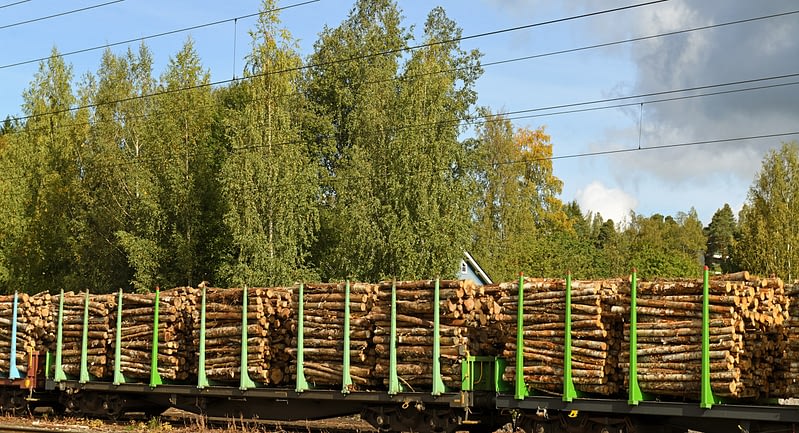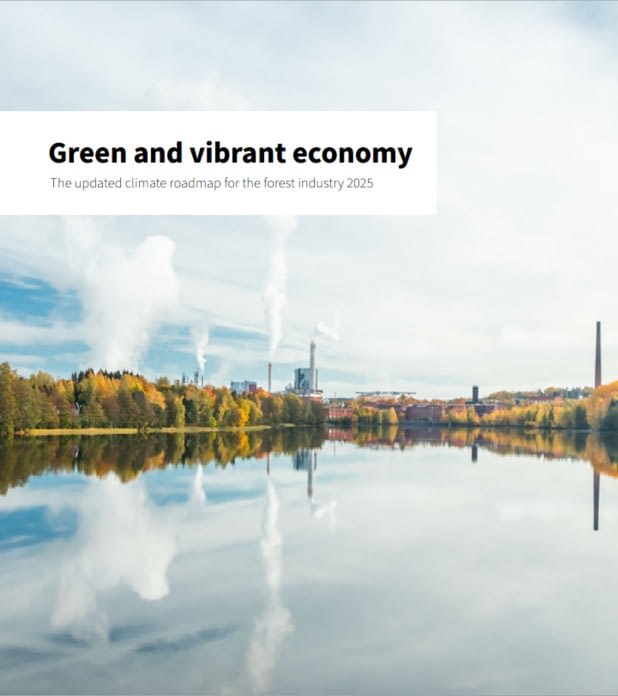A new report on the emissions of forest industry logistics and the opportunities to reduce them shows that the greatest potential for further emission reductions lies in moving timber transport from roads to rail. Maritime emissions trading and ETS2 reduce emissions directly only marginally. AFRY’s extensive emissions report and emission reduction scenario, covering everything from raw material procurement to goods export, are part of the forest industry’s climate roadmap update.
“The report is the first of its kind in Finland. The potential for reducing emissions has been studied across all modes of transport, from the forest to the world,“ says Esa Sipilä, Senior Principal at AFRY.
According to the report, the carbon dioxide emissions from forest industry logistics totalled 1.9 Mt CO2 in the reference year 2022. Timber procurement, i.e. harvesting and transport, as well as export transports were the greatest causes of logistics emissions.
The measures to control emission reduction already included in national and EU legislation will reduce carbon dioxide emissions from the entire transport chain of the forest industry by approximately 20% by 2035. The report takes into account national distribution obligations, the EU-wide emissions trading system for fossil fuel distribution (ETS2), the obligation to use alternative fuels in maritime transport (FuelEU Maritime), and maritime emissions trading.
The report also identifies other additional measures to reduce emissions from domestic logistics and halve emissions from timber transport. The realisation of additional emission reductions requires a substantial transition from road transport to rail transport, the implementation of cost-effective energy efficiency measures throughout the transport chain, and the fulfilment of the distribution obligation in accordance with the current legislation.
“In domestic logistics, there are only limited cost-effective and market-based means of reducing emissions. Nevertheless, the industry has also wanted to look into the potential of these emission reductions. In addition to emission control measures, it is time to roll up our sleeves in Finland and promote rail freight with concrete measures,“ says Ville Hulkkonen, Director at the Finnish Forest Industries Federation.
Reducing emissions by increasing rail transport is a real opportunity and the industry’s shared objective. However, this also requires commitment and action from the state.
“In the light of the report, removing real obstacles to competition is a climate policy issue that cannot be solely solved by business life. Finland lacks a determined strategy for improving the conditions for rail freight. Action should be taken immediately,“ says Ville Hulkkonen.
Among the measures, maritime emissions trading and ETS2 will only reduce emissions marginally, while increasing costs significantly. Their relative cost impact is greater in Finland than in the key reference countries.
“It is important that the compensation measures of ETS2 are introduced in Finland in the form of a professional diesel for heavy-duty vehicles and an energy tax refund for forestry machinery,” Hulkkonen emphasises.
The report was prepared by AFRY Management Consulting Oy on behalf of the Finnish Forest Industries Federation.
For further information, please contact:
Ville Hulkkonen, Director, Finnish Forest Industries Federation
Esa Sipilä, Senior Principal, AFRY Management Consulting Oy, esa.sipila(at)AFRY.com, 050 412 0829







